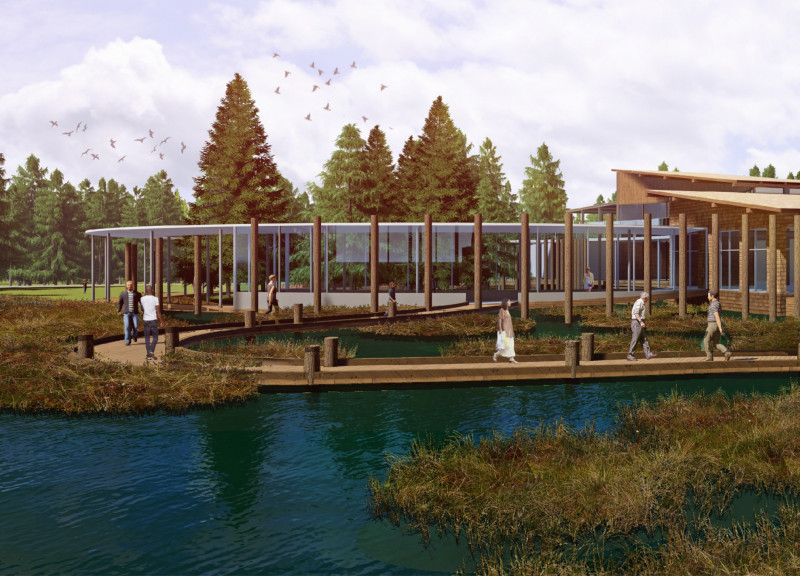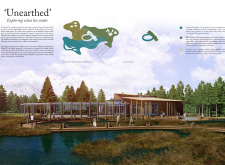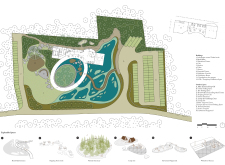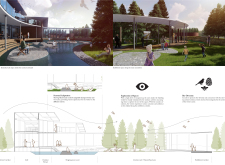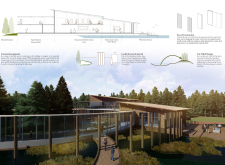5 key facts about this project
The architecture features a circular circulation route that encourages exploration and interaction with the environment. Visitors are guided through distinct zones, each offering opportunities for learning about the park's biodiversity and geological characteristics. The visitor center houses an information center, café, exhibition areas, and restrooms, all crafted with locally sourced materials to minimize ecological impact.
Unique Design Approaches
The visitor center employs several design strategies that differentiate it from typical architectural projects in similar settings. It uses locally sourced pine logs not only as structural elements but also as integral design features that celebrate the region's natural resources. The incorporation of circular pathways fosters a sense of discovery, compelling visitors to engage with their surroundings and the exhibits along their journey.
The building’s façade features wooden cladding, echoing local architectural styles and enhancing aesthetic integration with the surrounding landscape. Large glass panels are strategically incorporated to create visual transparency, allowing natural light to permeate interior spaces while maintaining clear views of the park. This design choice reinforces the connection between visitors and the environment, promoting a sense of tranquility and immersion.
Sustainable Practices and Community Engagement
Sustainability is central to the design of the "Unearthed" visitor center. The use of structural insulated panels contributes to energy efficiency, while the site plan incorporates native planting, encouraging biodiversity. Outdoor spaces are designed not just for aesthetics but also for educational purposes, allowing for hands-on learning experiences about local flora and fauna.
This project also focuses on community interaction by hosting various educational programs and workshops, making it a hub for environmental education for both locals and visitors. By promoting sustainable practices and integrating education with architecture, the project addresses environmental issues and fosters a greater appreciation for nature.
For detailed insights into the architectural plans, sections, designs, and innovative ideas of this project, readers are encouraged to explore the project presentation further. The thorough examination of these materials will provide a deeper understanding of the visitor center's architecture and its intent to blend seamlessly with the natural landscape of Kemeri National Park.


